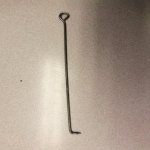The craziest 303 British loads I have ever seen. Here's four rounds that were fired a few days ago. Load is "174 gr Hornady and 38 gr IMR3031." Primer unknown.
View attachment 430193
The guy gave up, wondering what was wrong, because "Nothing like this has ever happened before."
I now have the box and pulled a round to check. Certainly looked like 3031, but there was 48 grains in the case! It was still halfway up the neck after the bullets were pulled. Pulled the remaining six rounds and all were the same.
No wonder the cases were stretched.... and the primers blown.
View attachment 430194
Of course, "Nothing like this has ever happened before." Apparently the rifle, a No1 Lee Enfield, is fine, but once again, Friends, never shoot someone else's reloads!
Now, anyone with Quickload able to tell us what ten grains more than was intended in this load this might have generated?
Ted
View attachment 430193
The guy gave up, wondering what was wrong, because "Nothing like this has ever happened before."
I now have the box and pulled a round to check. Certainly looked like 3031, but there was 48 grains in the case! It was still halfway up the neck after the bullets were pulled. Pulled the remaining six rounds and all were the same.
No wonder the cases were stretched.... and the primers blown.
View attachment 430194
Of course, "Nothing like this has ever happened before." Apparently the rifle, a No1 Lee Enfield, is fine, but once again, Friends, never shoot someone else's reloads!
Now, anyone with Quickload able to tell us what ten grains more than was intended in this load this might have generated?
Ted









































































